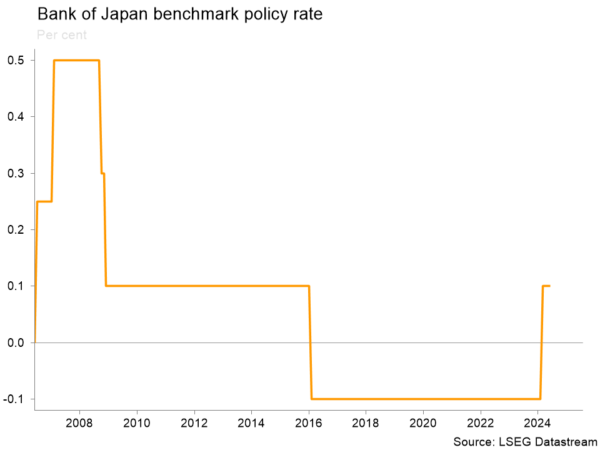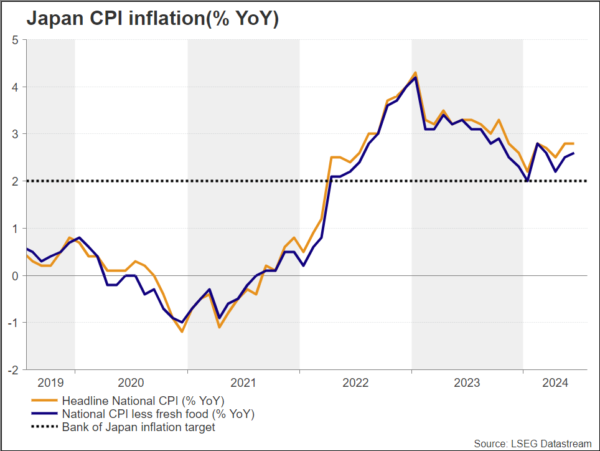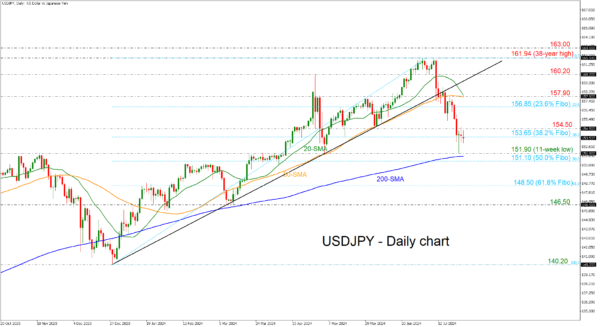- BoJ may shake the market with a rate hike
- The bank plans to unveil a strategy to roughly halve bond
- Yen recoups some losses with notable bullish correction
- Decision is due on Wednesday at 03:00 GMT
Will BoJ hike rates on Wednesday?
At its next meeting, the Bank of Japan (BoJ), one of the most important central banks in the world, will make an extremely significant decision about interest rates. The world economy is already having a difficult time due to inflation and other economic issues. The Bank of Japan’s decision will have a significant impact on the world’s financial markets and the Japanese economy.
Along with the rate hike, the BoJ is also going to announce a plan to reduce its usual bond purchases by half over the next few years. Even with these changes, the Bank of Japan has promised to keep buying long-term government bonds as needed and to keep conditions accommodative for now. This shows that the BoJ is cautiously positive about the economy and is still determined to support growth and stability. Bets on a July move have gone up, and a 10-basis-point-hike is now priced in at a 63% chance. So, if the bank leaves rates unchanged, there’s a lot of room for disappointment.
Ueda comments, inflation, and yen
But Kazuo Ueda, the governor of the Bank of Japan, said that inflation expectations are still some way off from hitting 2%. He also said that the BoJ will keep its stance loose until the underlying price trend hits that level. He added that the BoJ may raise rates further if prices rise beyond expectations. This demonstrates that the Bank of Japan is committed to its inflation goal and is willing to make changes to monetary policy as needed to achieve it.
This week’s interest rate decisions are not only significant for the BoJ but also for other major central banks like the Bank of England (BOE) and the Federal Reserve (Fed). Around the world, investors and lawmakers will be paying close attention to these events and what they might mean for global economic trends.
In terms of the Japanese economy, the yearly inflation rate stayed at 2.8% in June, the same as the previous month. It was the highest level since February. Japan’s economy was having a hard time at the beginning of 2024, but a small improvement may be on the way thanks to higher wages and more spending by consumers. The real GDP dropped 0.5% from the previous quarter to the first quarter of 2024. It also fell 1.3% from its peak in the second quarter of 2023. In three of the last four quarters, household spending in the US decreased. The economy seems to be at a turning point, which is positive news. Stronger wage growth and more moderate inflation are expected to boost consumer spending. In addition, a weak currency is likely to help exports grow. Even though all these conditions should make the economy better, growth is only expected to be moderate.
Finally, the upcoming interest rate decision by the Bank of Japan and the current state of the Japanese economy present a complex mix of opportunities and challenges. The Bank of Japan’s change in monetary policy shows that they have faith in the economy, but ongoing inflation and other economic headwinds show how important it is to handle policy carefully. The BoJ and other central banks will have to deal with these challenges, and the choices they make will have a big impact on the world economy in the coming months.
USDJPY moves with weak momentum
From a technical perspective, USDJPY found strong support near the eleven-week low, slightly beneath the 152.00 round number, and near the 200-day simple moving average (SMA). The pair has lost more than 6% since it topped at 161.94 and is still trading well below the long-term descending trend line. The next level to consider as support may be the 200-day SMA near 151.60, ahead of the 50.0% Fibonacci retracement level of the up leg from 140.20 to 161.94 at 151.10.
On the upside, a decisive break above the 154.50 barrier could drive the bulls to the 23.6% Fibonacci level of 156.85. A climb towards the upcoming bearish crossover within the 20- and 50-day SMAs near the 157.90 resistance level could not be enough for a full-scale reversal, as the pair would need to jump above the uptrend line and the previous high of 161.94.














